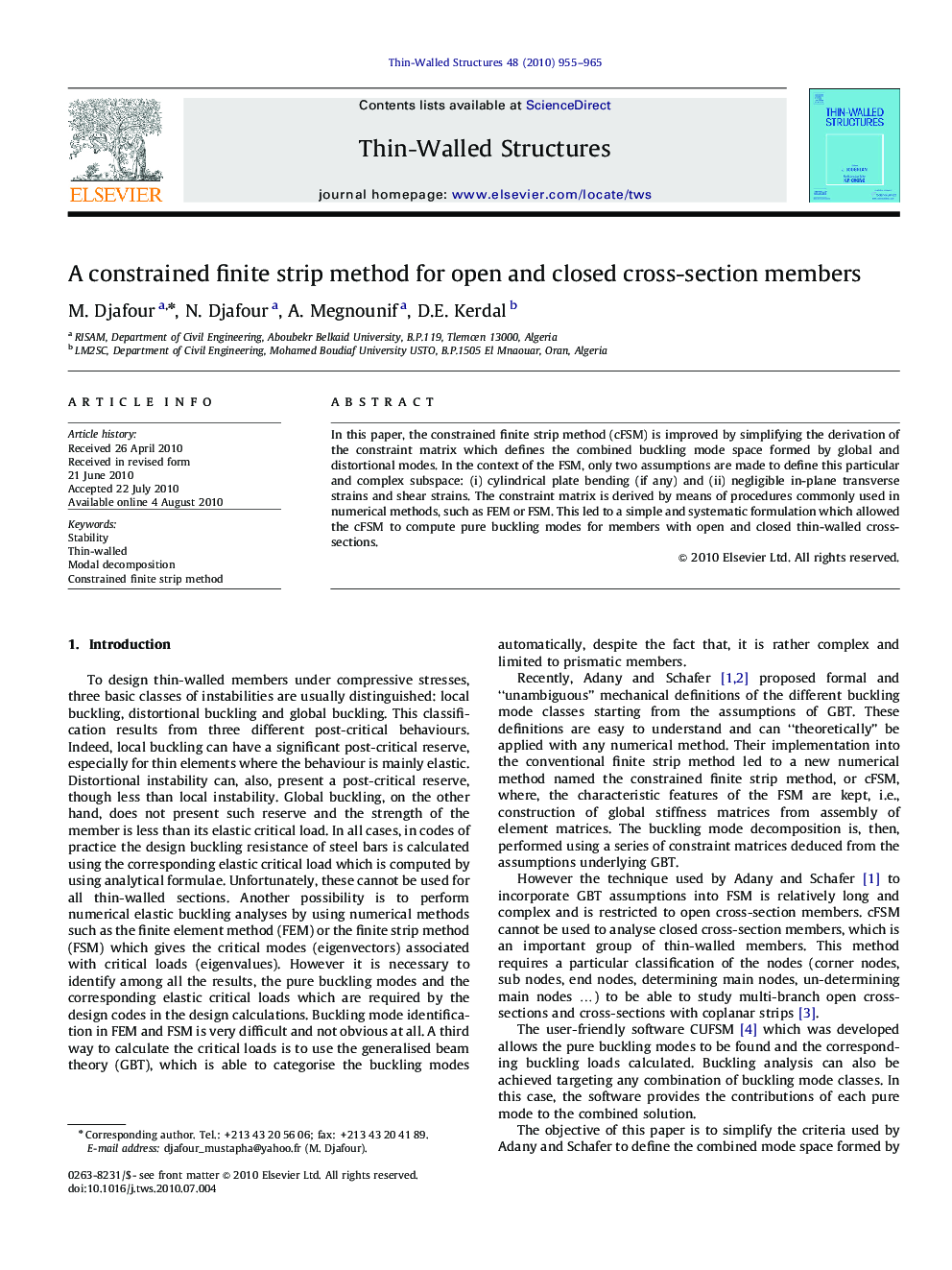| Article ID | Journal | Published Year | Pages | File Type |
|---|---|---|---|---|
| 309518 | Thin-Walled Structures | 2010 | 11 Pages |
Abstract
In this paper, the constrained finite strip method (cFSM) is improved by simplifying the derivation of the constraint matrix which defines the combined buckling mode space formed by global and distortional modes. In the context of the FSM, only two assumptions are made to define this particular and complex subspace: (i) cylindrical plate bending (if any) and (ii) negligible in-plane transverse strains and shear strains. The constraint matrix is derived by means of procedures commonly used in numerical methods, such as FEM or FSM. This led to a simple and systematic formulation which allowed the cFSM to compute pure buckling modes for members with open and closed thin-walled cross-sections.
Related Topics
Physical Sciences and Engineering
Engineering
Civil and Structural Engineering
Authors
M. Djafour, N. Djafour, A. Megnounif, D.E. Kerdal,
